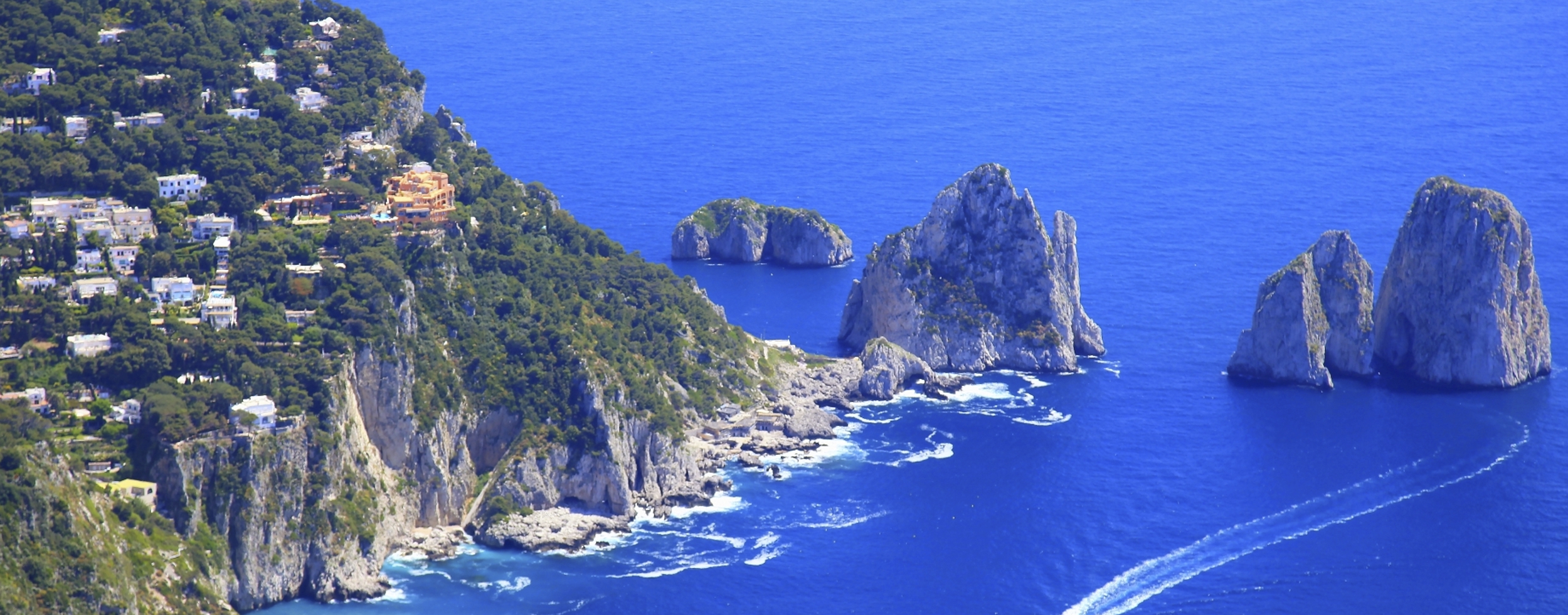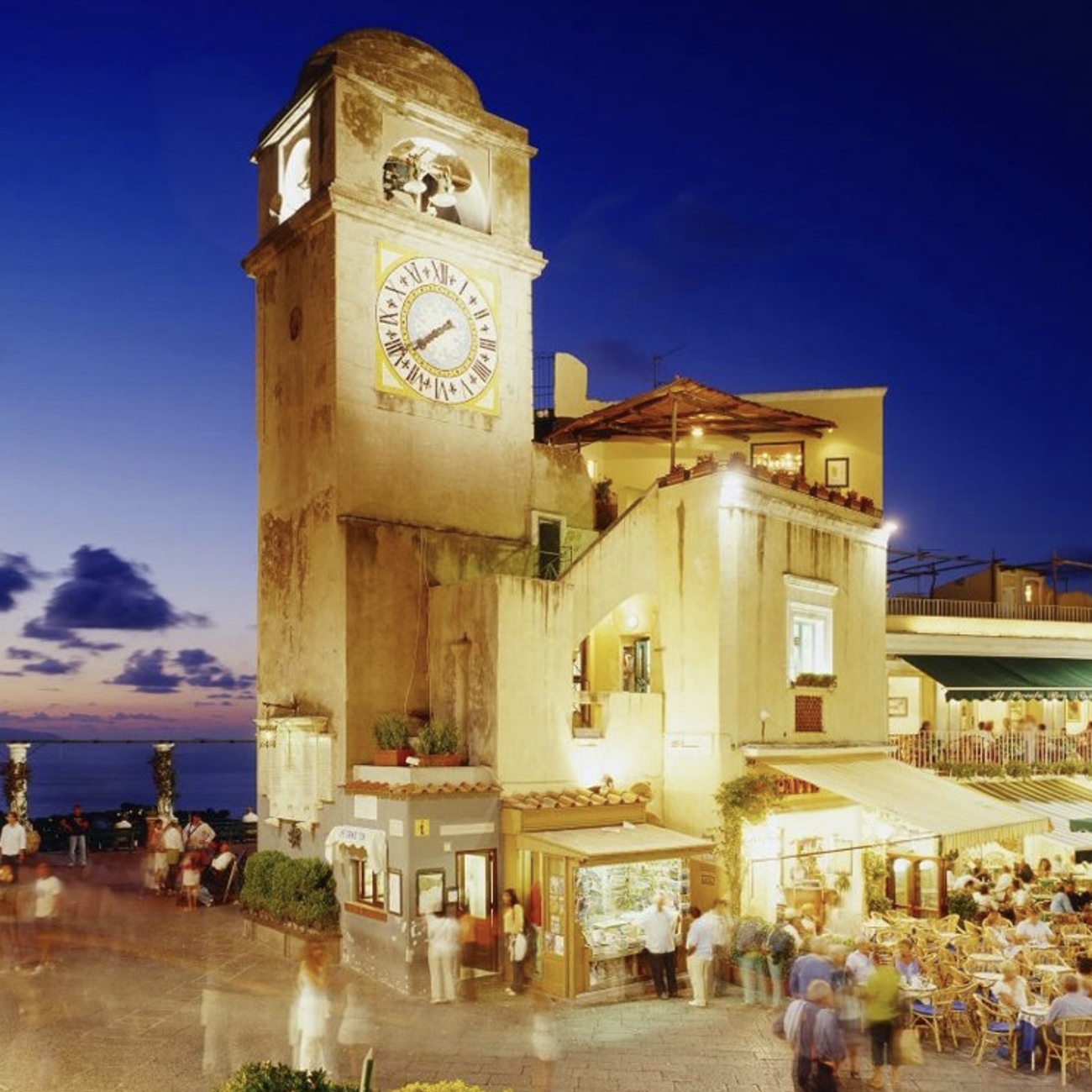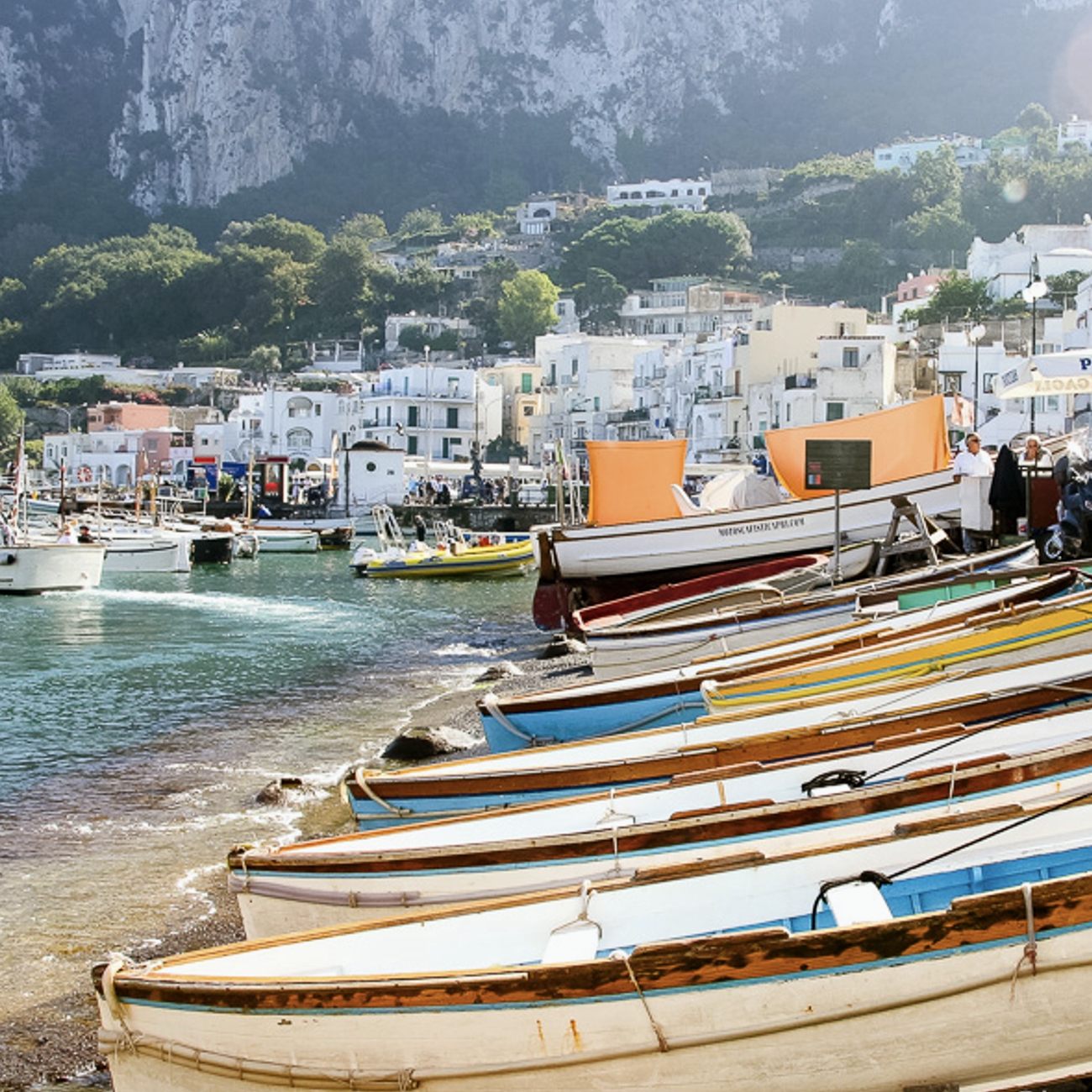Capri
The island of Capri is situated in the Gulf of Naples, between the Italian Peninsula and the islands of Procida and Ischia. Made of limestone, its lowest part is at the center, while its sides are high and mostly surrounded by steep precipices, which contain numerous caves.
Its topography is dominated by the slopes of the Monte Solaro in the West and Mont-Saint-Michel in the East.
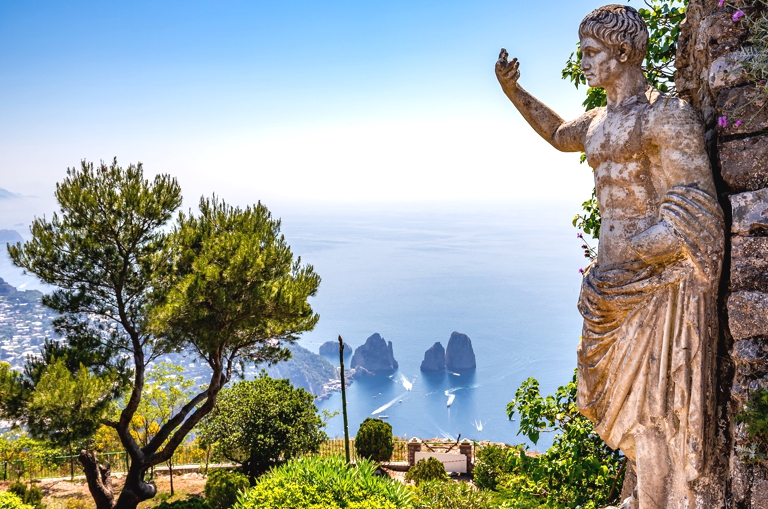
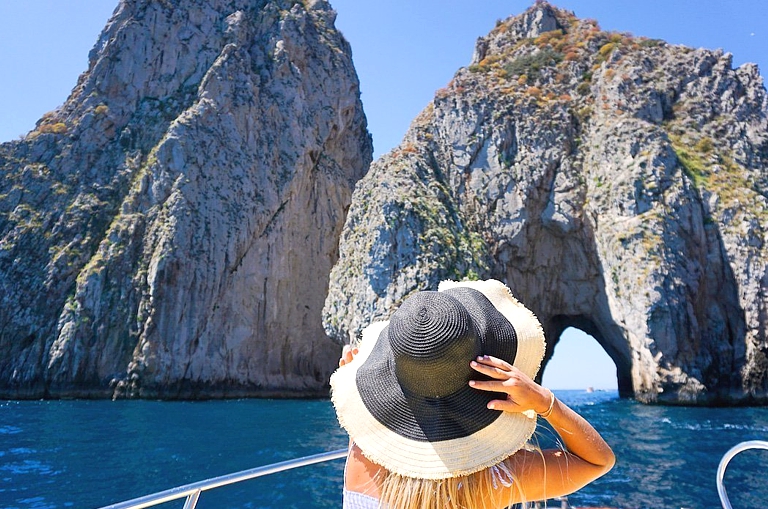
The island, is famous for its rugged territory, exclusive hotels and shopping, ranging from high fashion,to limoncello, to handcrafted leather sandals.
One of the best known natural sites is the Blue Grotto, a dark cavity in which the sea water is tinged with electric blue thanks to the presence of an underground cave that filters
the sunlight. During the summer, the island’s spectacular coastline, full of coves, attracts numerous yachts.
Storia
Prehistory and Greek period
The first discoveries of prehistoric-age remains occurred more than two thousand years ago during the Roman Imperial era, when excavations for Imperial buildings on the island unearthed remains of animals that had disappeared tens of thousands before, as well as traces of Stone-Age occupants. The story was documented by the historian Suetonius (75–140) who described the interest shown by the emperor Augustus in preserving these remains, creating the first museum of paleontology and paleoanthropology in his villa’s garden.
The earliest mythical inhabitants were the Teleboi from Acarnania under their king Telon. Neolithic remains were found in 1882 in the Grotta delle Felci, a cave on the south coast. In historical times the island was occupied by Greeks who from the eighth century BC onwards first settled on the island of Ischia and the mainland, at Cumae, and later came to Capri. The historian Strabo wrote that “in ancient times there were two towns in Capri, which were later reduced to one
One of those two towns was the precursor to today’s Capri town. This is confirmed by the remains of fortification walls, built with large limestone boulders at the bottom and square blocks at the top, visible from the terrace of the funicular railway, and a building at the foot of Castiglione, and these, together with other buildings now destroyed, complete the old town (5th to 4th century BC).
Regarding the second city, many hypotheses have been advanced, but the most reliable is that even then it was Anacapri, based on the existence of the Phoenician Steps that connect to the port (despite its name, the steps were not been built by the Phoenicians, but by Greek colonists).
Since its first settlement, the natural shape of the island led to the creation of two communities, one in the East with hills sloping down to the sea, and one to the West on a large plateau, the steep slopes of Monte Solaro and with no access to the sea.
Capri subsequently fell into the hands of Neapolis (the former Greek colony called Naples today) and remained so until the time of Augustus, who took it in exchange for Aenaria (Ischia) and often resided there.
Roman period
A topographic map of Capri showing the locations of some Tiberian villas
Tiberius, who spent the last ten years of his life at Capri, built twelve villas there.
Ruins of one at Tragara could still be seen in the 19th century. All these villas can be identified with certainty, the best-preserved being those on the East extremity, consisting of a large number of vaulted substructures and the foundations perhaps of a Pharos (lighthouse).
One was known as Villa Jovis; others include the Palazzo a Mare, villa di Gradola which included the Blue Grotto and Villa Damecuta. South of the Villa Jovis are remains of a watch tower used to communicate with the mainland. The numerous ancient cisterns show that in Roman as in modern times rain provided the island’s water since it has no natural springs.
Apparently, the main motivation for Tiberius’ move from Rome to Capri was his wariness with the political manoeuvring in Rome and a lingering fear of assassination.
The villa is situated at a secluded spot of the island and the quarters of Tiberius in the north and east of the palatial villa were particularly difficult to reach and heavily guarded.
According to Suetonius, Villa Jovis was the scene of Tiberius’ wild debauchery, but many modern historians regard these tales as merely vicious slander by his detractors. These historians believe that he lived a modest, reclusive existence on the island.
After Tiberius died, the island seems to have been little visited by the emperors, and we hear of it only as a place of banishment for the wife and sister of Commodus. The island, having been at first the property of Neapolis, and later of the emperors, never had upon it any community with civic rights. Even in Imperial times Greek was largely spoken there, as many Greek as Latin inscriptions have been found on the island.
From the Middle Ages to the 19th century
After the fall of the Western Roman Empire, Capri fell again under the rule of Naples, and suffered various attacks and ravages by pirates. In 866 Emperor Louis II gave the island to the comune of Amalfi. The political dependence of Capri to Amalfi, which had relations to the Eastern Mediterranean, is particularly evident in art and architecture, in which Byzantine and Islamic forms appeared. In 987 Pope John XV consecrated the first Caprese bishop.
Frederick IV of Naples established legal and administrative parity between the two settlements of Capri and Anacapri in 1496. Pirate raids by the Barbary corsairs reached their peak during the reign of Charles V. The medieval town was on the north side at the chief landing-place (Marina Grande), and to it belonged the church of S. Costanzo, an early Christian building. It was abandoned in the 15th century on account of the inroads of pirates, and the inhabitants took refuge higher up, in Capri and Anacapri. The pirate Barbarossa Hayreddin Pasha, called Barbarossa, plundered and burned Capri seven times. The worst raid occurred in 1535, when Barbarossa captured the island for the Ottoman Empire and had Anacapri castle burned down, the ruins of which are now called Castello Barbarossa. This castle is on the property of Villa San Michele today.
In 1553, a second invasion by Turgut Reis resulted in another capture and in the looting and destruction of Certosa di San Giacomo. The danger of such attacks led Charles V to allow the inhabitants to arm themselves, and new towers were built to defend the island. Only the 1830 French defeat of the pirates ended this threat.
A 17th-century visitor to the island was the French erudite libertine Jean-Jacques Bouchard, who may be considered Capri’s first modern tourist. His diary, found in 1850, is an important information source about Capri.
In January 1806, French troops under Bonaparte took control of the island. In May 1806, the island was wrested from French control by an English fleet under Sir Sidney Smith, and strongly fortified, but in 1808 it was retaken by the French under Lamarque. By a simulated attack on the two docks of Marina Grande and Marina Piccola, British attention was diverted from the west coast, where the French were able to scale the cliffs and forced the enemy to surrender. In 1813 Capri, was restored to Ferdinand I of the Two Sicilies.
In the latter half of the 19th century, Capri became a popular resort for European artists, writers and other celebrities, such as Norman Douglas, Friedrich Alfred Krupp, Jacques d’Adelswärd-Fersen, Christian Wilhelm Allers, Emil von Behring, Curzio Malaparte, Axel Munthe, and Maxim Gorky. The book that spawned the 19th century fascination with Capri in France, Germany, and England was Entdeckung der blauen Grotte auf der Insel Capri (Discovery of the Blue Grotto on the Isle of Capri) by German painter and writer August Kopisch, in which he describes his 1826 stay on Capri and his (re)discovery of the Blue Grotto.
Also in the 19th century, the natural scientist Ignazio Cerio catalogued Capri’s flora and fauna.
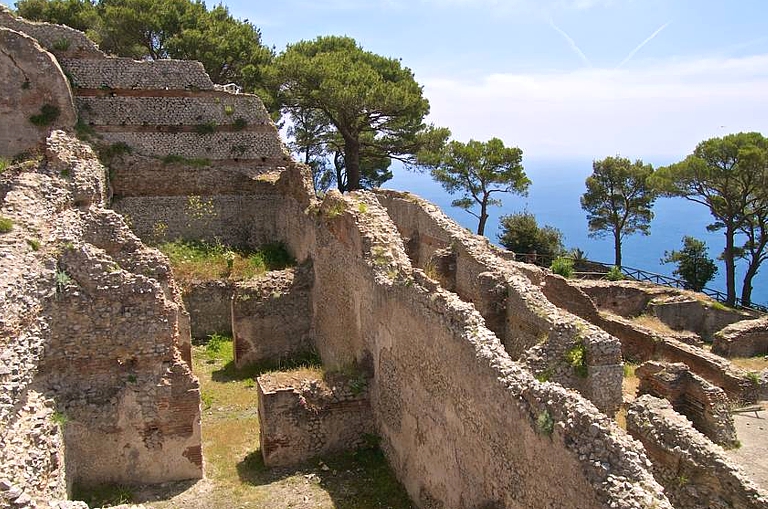
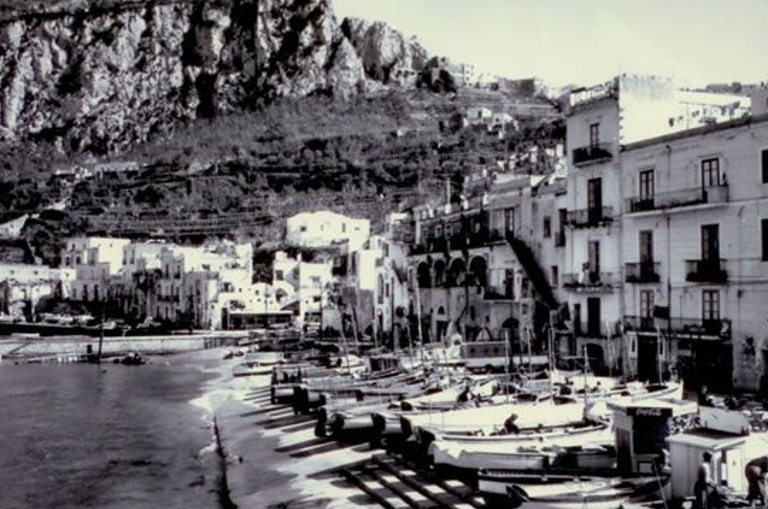
Things to see and do in Capri
Capri, Pablo Neruda's ``queen of rock``, has always been associated with glamorous and elite tourism. A photograph that only partially reflects the island which for a long time, however, owes its fortunes to cruise tourism and day trips (here the timetables of ferries and hydrofoils to Capri). In the ability to reconcile these two aspects, lies the main merit of Capri, able to make the ``dream`` more accessible without selling it off. As for the things to do, one cannot but start from the magnificent Blue Grotto.
Villa Jovis
Named in honor of the ancient Roman god Jupiter, or Jove, the villa of the emperor Tiberius is riveted to the towering Rocca di Capri like an eagle’s nest overlooking the strait separating Capri from Punta Campanella, the tip of the Sorrentine Peninsula. Lying near the easternmost point of the island, Villa Jovis is a powerful reminder of the importance of the island in Roman times. What makes the site even more compelling are the accounts of the latter years of Tiberius’s reign from Capri (AD 27–37), written by authors and near-contemporaries Suetonius and Tacitus. This villa was famous for its sybaritic living, thus sounding a leitmotif whose echo can be heard at the luxurious hotels of today.
There are remarkably few discrepancies between the accounts of the two historiographers. Both point to Tiberius’s mounting paranoia in Rome, while Tacitus outlines his reason for choosing Capreae (Annals, Book IV). “Presumably what attracted him was the isolation of Capreae. Harborless, it has few roadsteads even for small vessels; sentries can control all landings. In winter the climate is mild, since hills on the mainland keep off gales. In summer the island is delightful, since it faces west and has open sea all round. The bay it overlooks was exceptionally lovely, until Vesuvius’s eruption transformed the landscape.” Capri in Roman times was the site of 12 spacious villas, but Villa Jovis is both the best preserved and must have been the largest, occupying nearly 23,000 square feet.
The entrance to the site lies just beyond the pharos (lighthouse) built under Tiberius and used until the 17th century to warn ships away from the narrows between Capri and the mainland. Pick up a site map at the ticket office, which gives a useful breakdown of the various areas of the villa to be visited. Nearby, you can find the Salto di Tiberio (Tiberius’s Leap), the place where ancient gossips believed Tiberius had enemies—among them his discarded lovers and even unfortunate cooks—hurled over the precipice into the sea some 1,000 feet below. After taking stock of this now-harmless viewing platform and its information panels, take the upper path past the baths complex around the palace residential quarters to view the heavily restored Chapel of Santa Maria del Soccorso and its large bronze statue of the Madonna, a gift to the island from the Caprese painter Guido Odierna in 1979. The walk around the perimeter of the site gives an idea of the overall layout of the palatial residence, which in places rose to five stories in height. From here descend some steps and then a ramp to the ambulatio (walkway), which offers additional spectacular views and plenty of shade, as well as a triclinium (dining room) halfway along. The center of the site is a complex devoted to cisterns. Unlike in Pompeii, there was no aqueduct up here to provide fresh running water, so the cisterns next to the bath complex were of prime importance. From La Piazzetta allow 45 minutes each way for the walk alone.


Giardini di Augusto (Gardens of Augusto)
The Augustus Gardens are in a historic property adjacent to the Charterhouse of San Giacomo, purchased by the German industrialist Friedrich Alfred Krupp at the beginning of the 1900s to build his residence on Capri. After the First World War, the property was renamed ”The Augustus Gardens”, which has remained until today, and holds the most important island flora found on Capri.
The nearby Via Krupp was also the work of Friedrich Alfred Krupp. The German steel magnate was an avid marine biologist and loved to visit Capri with his yacht, which he would moor in the Marina Piccola Bay. To reach his private boat easily from his suite at the Grand Hotel Quisisana, he commissioned this breathtakingly scenic route which clings to the cliffside as it switchbacks steeply down to the water beneath the Augustus Gardens.
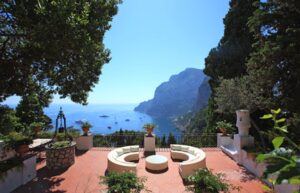

Casa Rosa
Capri is famous for its villas built by artists, millionaires, and poets who became willing prisoners of Capri during the Gilded Age. Elihu Vedder, Charles Coleman, Lord Algernon, and the Wolcott-Perry sisters were some of the people who constructed lavish Aesthetic Movement houses. Built by the American colonel J.C. MacKowen, this particular villa, near the center of Anacapri, was erected between 1876 and 1899.
With walls hued in distinctive Pompeian red, the villa incorporates a noted 15th-century Aragonese tower. A historian and archaeologist, MacKowen wrote a guide to Capri and brought to light marble fragments and statues inside the Blue Grotto, thus revealing and validating its importance as a nymphaeum in Roman times; the statues are displayed here. Local legend says that Anacapri’s menfolk locked their women in Casa Rossa when they went to work in Naples, but the villa now houses a permanent exhibition called “The Painted Island,” featuring 32 canvases from masters such as Brancaccio and Carelli, depicting images of Capri in the 19th and 20th centuries. A collection of oils by 20th-century Milan landscape artist Carlo Perindani was added in 2015. Don’t miss the views from the highest roof terrace in central Anacapri, taking in Monte Solaro and Ischia.
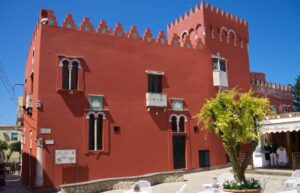
I Faraglioni
Few landscapes set more artists dreaming than that of the famous Faraglioni—three enigmatic, pale-ocher limestone colossi that loom out of the sea just off the Punta Tragara on the southern coast of Capri. Soaring almost 350 feet above the water, the Faraglioni have become for most Italians a beloved symbol of Capri and have been poetically compared to Gothic cathedrals or modern skyscrapers. The first rock is called Faraglione di Terra, since it’s attached to the land; at its base is the famous restaurant and bathing lido Da Luigi, where a beach mattress may accompany the luncheon menu.
The second is called Faraglione di Mezzo, or Stella, and little boats can often be seen going through its picturesque tunnel, which was caused by sea erosion. The rock farthest out to sea is Faraglione di Scopolo and is inhabited by a wall lizard species with a striking blue belly, considered a local variant by biologists although legend has it that they were originally brought as pets from Greece to delight ancient Roman courtiers.

Monte Solaro
An impressive limestone formation and the highest point on Capri (1,932 feet), Monte Solaro affords gasp-inducing views toward the bays of both Naples and Salerno. A 12-minute chairlift ride will take you right to the top (refreshments available at the bar), where you can launch out on a number of scenic trails on the western side of the island. Picnickers should note that even in summer it can get windy at this height, and there are few trees to provide shade or refuge
The second is called Faraglione di Mezzo, or Stella, and little boats can often be seen going through its picturesque tunnel, which was caused by sea erosion. The rock farthest out to sea is Faraglione di Scopolo and is inhabited by a wall lizard species with a striking blue belly, considered a local variant by biologists although legend has it that they were originally brought as pets from Greece to delight ancient Roman courtiers.

Capri Tour Privato
Durata del tour: 8 o 4 ore
Da: 850 €
Departure from Positano or Praiano towards the island of Capri. Along the way we will also pass through the famous island “Li galli” known throughout the world for the famous legend that saw it as the “home” of the mermaids, mysterious creatures that tempted sailors with their soft singing.
You will then reach Capri, one of the most famous and requested destinations in Campania.
We will visit the most beautiful spots of Capri, such as the White Cave, the Natural Arch, the Faraglioni, one of the most romantic and evocative sceneries of Capri. Arriving at the port you will have the opportunity to choose how much free time you have at your disposal to visit the center of Capri and go shopping, or the sailor will recommend a good restaurant along the coast where you can enjoy a good meal overlooking the sea.
Back on board we head to the Green Grotto, Punta carena with its lighthouse and the Blue Grotto (extra ticket 15 € pp cash to be paid directly there), this visit is optional, you can visit it or decide with the sailor not to visit it.
Your sailor will also be able to advise you of splendid coves where to stop for a bath. On board you can take advantage of a wide selection of drinks available for you.
Lascia un commento
Hai commenti o domande per noi? Ci piacerebbe sentire la tua opinione! Non essere timido! Sentiti libero di inviarci un messaggio!




